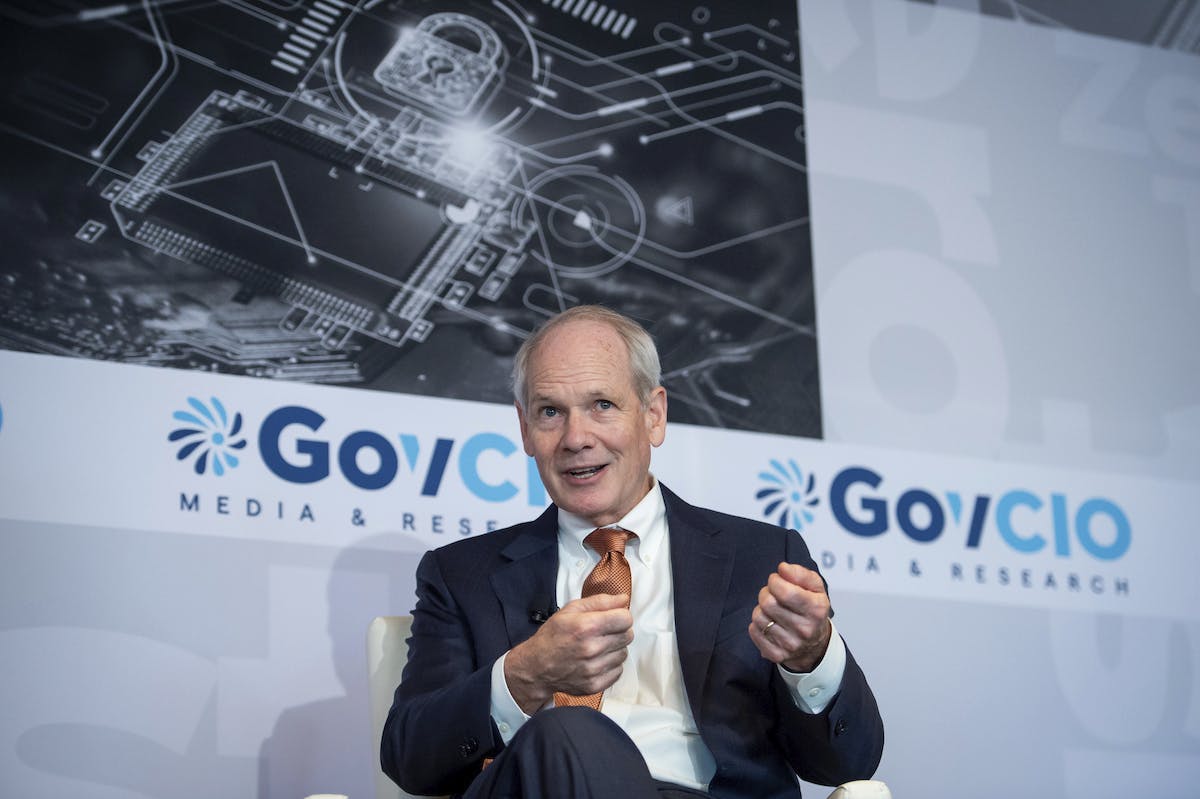VA CIO Q&A: Modernization, Accountability and Trust
Kurt DelBene outlines progress in his digital modernization strategy and the future of technology development.

The Department of Veterans Affairs has been undergoing a widespread modernization journey to transform how the agency delivers services to veterans. Recent developments have included launching a new health and benefits app and creating workflow efficiencies to process PACT Act-related claims, VA leaders touted during an event in Palo Alto, California.
VA’s tech chief Kurt DelBene previously outlined his Vision 2022 strategy on GovCast.
“When I stepped back and spent the first few months kind of looking at the complexity of the organization and all the things going on, there are a few things that I thought we needed to work on — what are the guiding lights that we need to be really focused on?” DelBene said at the time.
The CIO has been updating the public on some of these efforts through a blog series in which he advocates for concepts like running IT processes as a product group and thinking strategically using technology.
We sat down with DelBene this summer to learn more about this vision and where he is most prioritizing advancements in technology.
What progress have you made on your Vision 2022 strategy?
We’ve made great progress. We’ve developed the vision and connected our priorities with roadmaps for the next two to three years. That creates benchmarks so we can measure our success.
We’ve defined OKRs (objectives and key results) for the organization overall and for each team within it. These OKRs are the critical improvements we expect to accomplish in the next several months. We’re making priority-based trade-offs to ensure we’re focusing on the most impactful work. We’ve got scorecards and dashboards so we can report on the status of the systems and the work we do.
Because we have one of the most complex cybersecurity landscapes, we are guided by our zero trust approach to continuously engineer out vulnerabilities. Every morning we also conduct standups where we triage all the critical system failures of the past 24 hours.
And we “embrace the red,” which means we don’t assign blame — we solve problems.
In one of your recent blog posts, you said that “IT should run as a product group.” What does this mean?
My blog series outlines what I think the priorities are for OIT as we continue our digital transformation. I am laying out where we’re heading and what we’re doing to deliver world-class services for veterans. Digital transformation means something different for everyone. For VA, we recognize that modern digital systems are at the heart of executing our core mission.
OIT has a new outlook toward our corporate relationships, ensuring that we work together as one team, moving toward a common goal and continuously improving our technical rigor. I view our OIT teams as a single product group, despite the fact that much of our work is outsourced. We are still one team.
However, contractors are vendors. We hire contractors to do the work. That means there must be accountability. We will conduct project reviews and planning jointly and be clear on who is responsible for what. We will review and document contractor performance and determine if we want to work with them again. Our FITARA reviews can weed out those contractors that aren’t meeting our expectations, which will determine whether or not we continue our partnership.
Expect to see us evolve from “order takers” to strategic thinkers, leveraging the power of technology to drive meaningful outcomes that improve the lives of those we serve. We will proactively identify and resolve problems.
VA was recently named among the best places to work in government by the Washington Post. Where does tech fit into that?
I’ve always focused on people excellence, which is a part of our vision for OIT. Without the right people in place, the work doesn’t get done.
We’ve created career pathways and progression plans so workers see the opportunities ahead of them. Last fall, we launched a hiring drive — our Work For Us campaign — to attract tech workers who were being downsized from the private sector. We had to make a case to them that they will be valued and their skills appreciated in the federal space.
We’ve been a remote organization since the pandemic, and while that won’t be the case forever, it is a huge enticement for tech workers. We meet via Teams and hold conferences over WebEx and Zoom. Our workers appreciate that, as a tech organization, we are using the latest technology to do our work.
Efforts like the Cyber Training Academy, Cyber Career Pathways, Cyber NexGen Program and the VA Cyber Workforce Management policy are creating a multifaceted approach to developing our cyber workforce.
OIT technicians resolved nearly 2 million service calls in 2022, helping OIT achieve an 80.9% customer satisfaction score. What tools helped you streamline customer engagement and improve user experience?
Our online tools and our mobile app continue to grow with our veterans.
Our PACT Act webpage has nearly 12 million views (as of May 28) and has had more than 450,000 clicks to file a disability claim online and nearly 85,000 clicks to apply for health care.
Nearly 1.5 million veterans have downloaded our Health and Benefits App. It has more than 645,000 monthly users and more than 585,000 monthly appointment detail views.
We’ve supported more than 26.5 million telehealth visits since the pandemic started.
A good example is related to the PACT Act, where we’re working to accelerate the rate of claims resolution by automating the process. That has a direct benefit to both the agency and our veterans.
This is a carousel with manually rotating slides. Use Next and Previous buttons to navigate or jump to a slide with the slide dots
-

DOD Can No Longer Assume Superiority in Digital Warfare, Officials Warn
The DOD must make concerted efforts to address cyber vulnerabilities to maintain the tactical edge, military leaders said at HammerCon 2025.
4m read -

CISA's CVE Program and Why it Matters for Zero Trust
The vulnerability program provides the cybersecurity community visibility into software as part of a key pillar of CISA's zero trust model.
5m read -

Agencies Use AI to Boost Efficiency, Cybersecurity Under White House Mandates
DLA and GAO are investigating how AI can boost efficiency and bolster cybersecurity as agencies align with the president's tech directives.
3m read -

DOD Cyber Strategy to Adapt to New Budgets, Tech Innovation
Budgetary pressures spur innovation as department tackles aging infrastructure and evolving threats, says top cyber official.
4m read -

Accelerating Modernization to Boost Pentagon’s Efficiency
Sean O’Lone, former senior assistant to the Department of Navy CIO and current CTO of SAIC’s Navy Business Group, unpacks the future of defense IT modernization.
9m watch -

DISA, Navy Progress in Zero Trust Implementation Goals
Initiatives like Flank Speed and Thunderdome are proving successful scale in zero trust around lessons learned this year.
4m read -

Modernizing Maritime Medicine on USNS Mercy
Navy's Military Sealift Command is leveraging telepresence technology and extending wireless networks to transform the way medical care is delivered.
8m watch -

Navigating Zero Trust for Cybersecurity
The World Bank Group and Lumen advance zero-trust strategies and identity management to secure sensitive data.
18m watch -

Implementing Zero Trust to Boost Resiliency
Modernization, data security and culture shifts power zero trust at DOD and Red Hat.
32m watch -

Combatting Critical Infrastructure Threats Requires Unified Cyber Approach
Cyber officials stress threats to critical infrastructure and need for a unified strategy to modernize legacy systems and boost zero trust.
4m read -

Advancing Cybersecurity with ICAM
Security leaders are developing robust identity management strategies as agencies and organizations bolster zero-trust architectures.
10m read -

Interior Taps New Acting Deputy CIO
Lou Eichenbaum, who previously served as Department of Interior's zero trust program manager, becomes acting deputy CIO.
2m read
















